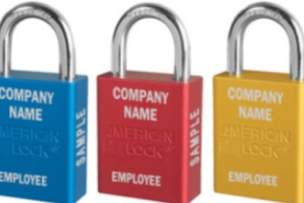Lean principles can help improve safety at metalworking facilities.
Metalworking manufacturers know the benefits of efficiency as well as the importance of safety. But a well-designed metalworking shop layout does not need to sacrifice one for the other. Instead, a focus on lean manufacturing principles can help boost safety even as it improves processes and reduces waste.
U.S. manufacturers began ushering in the era of lean manufacturing in the 1980s, following in the footsteps of their Japanese counterparts by improving efficiency, eliminating waste and reducing defects. As time has gone on, manufacturers have learned that lean manufacturing processes can do more than just improve efficiency—they can also help companies improve safety by integrating it into an overall focus on quality.
What Is Lean Manufacturing?
Done right, lean processes create a workplace focused on eliminating waste.
“Lean is about transforming your business culture,” Mike Petkewich, a senior knowledge expert and team manager for lean manufacturing at The Boston Consulting Group, told Better MRO. Methods vary from Poka Yoke, 5S to PDCA and SMART goals. All focus on continuous improvement through steps such as improved processes, knowledge sharing and maintaining lower levels of inventory.
“Getting people to see the waste, and then giving them the tools and techniques to think differently, to reduce and eliminate that waste—that’s the key,” Petkewich says.
He says waste is defined as something that adds no value to a product, including wasted time or materials. Lean philosophies identify processes that include waste and empower people to fix them.
Lean Manufacturing and Safety
Terry L. Mathis, co-author of “STEPS to Safety Culture Excellence” and founder and CEO of ProAct Safety, says lean principles fit well with safety improvements. “Safety and lean can forge an alliance to reduce the greatest of all possible wastes: accidental workplace injuries.”
“Once you get past the stereotype of lean manufacturing and consider the concepts of lean from a more generic point of view, they can be applied very well to safety,” Mathis tells EHS Today. “Accidental injuries are defects in our processes. We can improve the quality of these processes, thus diminishing the defects, by making them more efficient and removing the waste.”
Safety defects in the metalworking process could include failure to adhere to lockout/tagout procedures or a storage system that keeps essential safety items too far from their point of use.
Making changes requires examining not just existing processes, but also the theories that drive them, says Mathis. “Lean is not just about ‘less,’ it is about efficiency,” he says. “It does not seek to do as well with fewer resources; it seeks to produce excellence by focusing resources on highly effective activities and eliminating the activities that do not add value.”
Mathis says that, ideally, lean tools could be used to improve safety at the strategic level.
“While the lean tools can be helpful, it is lean thinking that has the greatest potential to begin a significant change in safety performance,” says Mathis. “All meaningful change begins with thinking differently.”
Integrating Safety with Lean Manufacturing
Peter Susca, principal/owner of OpX Safety, says companies can make their safety processes more efficient by integrating safety into operational and support processes.
“To foster integration, operational leaders may need to help their safety professionals become more operationally savvy,” Susca writes in Industry Week. This could mean including instructions on lockout/tagout procedures in a work order or integrating safety training into work process training. “For example, if your organization conducts job/task-specific training (and refresher training), then include the required Hazard Communication elements in that training rather than making everyone attend a ‘generic’ hazard communication training session.”
Susca says facilities can also work to make safe conditions more obvious by determining the right way for something to be done or for a piece of equipment to work and then designing visual cues so anyone walking by can clearly see if something is wrong.
5S vs. 6S Methodology in Lean Manufacturing
Methods of implementing lean manufacturing include 5S and, more recently, 6S.
The five S’s in 5S are sort, straighten, shine, standardize and sustain. Dan Davis of FMA Communications, writing for The Fabricator, says 5S is not a program but a commitment to an orderly work environment. Adherents standardize work processes and environments on a daily basis to get consistent and predictable results.
Some companies take it one step further and practice 6S, which takes all the elements of 5S and adds a sixth component: safety. It allows for companies to stress safety more explicitly, to help keep it in the forefront, Davis says. Not all companies feel it’s necessary.
“Lean manufacturing aficionados feel that if 5S is done properly, safety takes care of itself,” he says. “If the job is being done according to the standardized approach, the risk of an accident occurring is minimal. After all, would anyone really incorporate unsafe practices into an agreed-upon standard?”
Lean Manufacturing Safety Risks
Though lean manufacturing can improve a business’s bottom line, it is not without potential drawbacks.
Clare Condon writes for EHS Daily Advisor that lean manufacturing can pose safety risks for workers, causing injuries such as musculoskeletal disorders. That’s because increased efficiency can mean a faster work pace or increased production.
For some manufacturers, Condon says, the drive to eliminate waste and improve efficiency ignores human limitations.
“If you remove all the waste from a person’s job, you risk eliminating invisible but necessary recovery time—time that workers’ bodies need to restore energy to cells and prevent disabling MSDs,” she says.
Condon says managers need to be sure to address ergonomic risk factors and to respond quickly to worker complaints about increased levels of fatigue, discomfort or pain.







Talk to Us!
Leave a reply
Your email address will not be published. Required fields are marked *